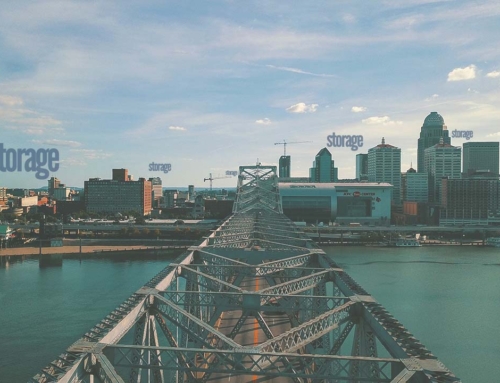Finding the perfect site for a self-storage development project is a careful process that takes a lot of research, plenty of patience and a critical eye. Here’s how to navigate the course with confidence and, ultimately, success.
Finding the right site for a self-storage project can be the most difficult step in the development process. Sometimes, the process changes along the way. Each opportunity has its own nuances. You might be looking to build from the ground up or convert an existing structure from another use. There are many potential scenarios, and your search parameters will change accordingly. For the purposes of this article, we’ll focus on raw-land development for new, ground-up construction.
Start the Search
As your first step, I recommend finding and comparing multiple sites. Some helpful resources include local MLS (multiple listing service) sites or commercial-brokerage sites, along with national websites like CoStar, Crexi and LoopNet. You may want to ask a local agent or broker who works in commercial real estate to send you information on potential sites. A designated CCIM (certified commercial investment member) agent can usually help further, completing a specific development scenario to meet your investment requirements.
Before pouring through stacks of land listings, think about your size and budget considerations relative to your market area and the type of project you wish to build. These all play a part in the process. Some in self-storage suggest a traditional site should be three to five acres; but this really only applies to single-story, drive-up facilities, not multi-story. Multi-story projects can be built on 0.5 acres or even less.
Consider Budget and Market
Next, think about your budget. Let’s say you want to build a mix of standard drive-up and interior climate-controlled units in single-story structures. Aiming for 13,000 to 15,000 square feet per acre, you can get roughly 65,000 to 75,000 square feet of net rentable area on a 5-acre site. Now, let’s say total development costs (not including acquisition costs) are $50 per square foot. That puts construction costs at $3.25 million to $3.75 million.
If your goal is to spend no more than $2.5 million on this first development, you probably don’t need five acres. One strategy is to buy the five acres now and build in phases, but you may incur additional carrying costs and added risk for potential market changes that could hinder your future phases. If costs creep up, then scale back with a smaller site.
Market considerations also play a role. Is your area rural, a booming suburb or a revitalized downtown neighborhood? Look at other facilities in the area, particularly the newest ones. What have others built recently, and are they well-received? If there aren’t any multi-story sites in your market, there may be a reason you shouldn’t be the first to test those waters.
Once you consider your budget and the type of project to build and confirm it makes sense in your market, you can start looking for an appropriate site to meet your specific needs. Though you may have dreams of building the first multi-story, climate-controlled facility in your area, it may not be realistic based on current market trends and demand. Understanding what you should build and what it will cost can help you home in on an appropriate site size and location.
Look for the Gap
When seeking a site for self-storage development, you must think about supply and demand. Consider using one of the industry websites that track current and future supply to find gaps in your target area. These pockets lack self-storage but have decent preliminary demand indications.
Some online tools display the locations of existing and proposed self-storage sites (not always accurately, but it’s a good starting place) and can help identify specific options in the broader market. See what the saturation ratio is for various intersections or growth corridors, looking for ones well below the national average of 6 to 8 square feet per person. This is a great method to identify potential sites.
Take it a step further by calling around for local occupancy rates. If the facilities closest to an area in which you’re interested have stabilized occupancy of 80 percent to 89 percent, move on to another location. You want to find a market in which everyone indicates they’re full, nearly full or have year-round waiting lists. Ideally, you want to hear occupancy is at 95 percent or higher.
If your online research indicates there are three new facilities planned on the east side of the city, look at the west side to see where there’s growth. For example, where are apartments being built? Is there a planned corporate headquarters coming into the area bringing 100 or more new jobs? Other growth-pattern indicators are single-family homes, senior-living communities, office parks, new jobs, a new bypass, large-scale retail projects, new schools, etc. Identifying the next “boom” area can help pinpoint a site to consider.
Keep in mind that if you’re just conducting an initial search for a site, it could be years before you actually find one, let alone build and open a facility. Your search should be prospective, not necessarily current. I’ve known owners to look for the right opportunity for more than two years, and the design/build phase can take another year or more. The entire process, from site search to opening, could be three or more years, and that’s without possible zoning or entitlement delays. It’s also important to recognize that market supply and demand can change significantly during a three-year stretch, so you must always think ahead.
Check Other Criteria and Demographics
Once you’ve identified some general locations, look for sites that check other boxes like traffic counts, accessibility, frontage/exposure, demographics, etc. A parcel doesn’t have to be in a primary commercial location with an average traffic count of more than 30,000 cars per day. That’s great, but not imperative. With increased online visibility, having a top-notch website is every bit as, if not more important, as having commercial-corridor presence and physical visibility.
A site at the end of a dead-end road may once have been shunned by developers, but it now might be considered due to rising land prices and the influence of online searches. So, while traffic counts and exposure should be considered, if primary land is $750,000 per acre but the market has high storage-demand indications, move on to a secondary site in this market.
You can also analyze and compare demographics for each site in which you have interest. Run a report for a one- to three-mile radius and compare the population, number of households and average household income. If the market is rural, you may want to expand that radius to four to six miles. An area with high income suggests there’ll be demand for climate-controlled units or higher rental rates, which can be attractive for new development. Any site that indicates decreases in future population, households or income should be a red flag (in most cases). Comparing demographics can help you make some decisions.
Consider Zoning
Another major consideration is zoning. Let’s say you find a reasonably priced 3-acre site. It seems to be in a good location with decent frontage and visibility. Traffic counts are good for the area. So far, so good!
The site has a C-1 zoning designation, meaning it’s in a commercial district. Self-storage is surely permitted in C-1, right? Wrong, or at least, maybe not. Research your zoning ordinances and understand the districts in which self-storage is considered a permitted use. There’ll likely be some districts in which it’s “permitted” and others in which it’s considered a conditional or special use, which means there are more hoops through which to jump. More hoops means more time; and the more time spent, the more things can change.
Obviously, if you find a site that’s zone-ready, you’ll be able to move through the development process much quicker. If you find one that’s zoned appropriately but needs a conditional permit, call the zoning office to find out the time and cost associated with this effort. In some cases, it can take six to nine months or longer to get a site re-zoned or secure a conditional-use permit. Again, the market could change significantly while you’re in the middle of the process and you may need to re-evaluate. At that point, you may discover new, competing proposals for projects just a mile away, which, despite your rezoning, would render your site less than perfect.
Consider Land Cost
A common question is how much you should reasonably pay for land. There’s no correct answer. It really depends on what you’re building, how much you’re building, underlying market rents, and overall construction costs.
If you pay $100,000 per acre for five acres for a traditional, drive-up self-storage facility, that would be a land-acquisition cost of $500,000. If you intend to build a three-story, climate-controlled building on 1.5 acres, you could pay up to $333,333 per acre and spend the same amount. Both scenarios could result in around 75,000 square feet of net rentable area. The climate-controlled project would have higher construction costs but would likely yield higher income.
Price per acre can vary tremendously. What you can afford to pay for the land really depends on what you’re building and should be evaluated on a case-by-case basis. Run through the numbers before looking for a site.
Speak with lenders early in the process to get the ball rolling and keep them in the loop as you search. Most will work with clients through the process and can provide additional guidance and resources. Your broker should also be able to give you an idea of how much can be lent up front, which can help you back into how much you can afford to pay.
Most lenders will require a feasibility study from an unbiased, third-party consultant, which provides invaluable market data and project reassurance. Even before you’re ready for a feasibility study, most of these professionals can help during site selection by completing preliminary demand analyses or site-comparison studies. Contact a couple early in the process to see how they can assist. At the very least, familiarize yourself with options, so once you tie down your land, you’ll know who to contact and can quickly move forward with a study.
Close the Deal
When you find “the one” and are ready to pull the trigger, include a hefty due-diligence period or contingency specific to feasibility and other requirements. I recommend 60 to 90 days or longer. If you can only manage a 30- or 45-day period, write in a contingency for a favorable feasibility study from a third-party consultant.
There could be other exigencies relative to your specific project. Think about what must be accomplished to get the green light from local planning/permitting departments as well as achieve favorable feasibility. Write your offer and, once it’s accepted, call in the professionals and be ready to hit the ground running.
Remember, each site is unique and must be analyzed as such. The more research and analysis you do before securing a site, the quicker the self-storage development process will be. Good luck!
Amanda Helfrich, is an appraiser and feasibility consultant with Starr Commercial Real Estate in Louisville, Ky. She has worked as a commercial appraiser for 13 years and holds a MAI designation from the Appraisal Institute. For more information, call 502.807.7319; e-mail [email protected]; visit https://starrcommercial.com.




